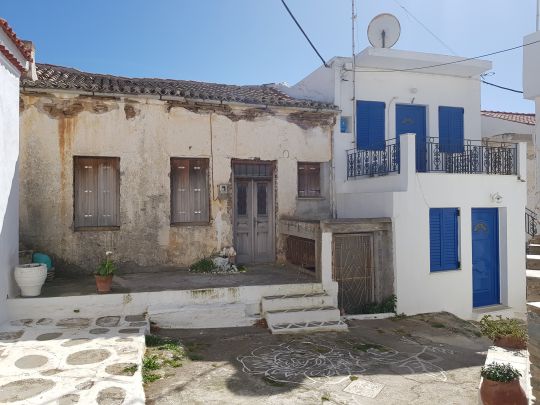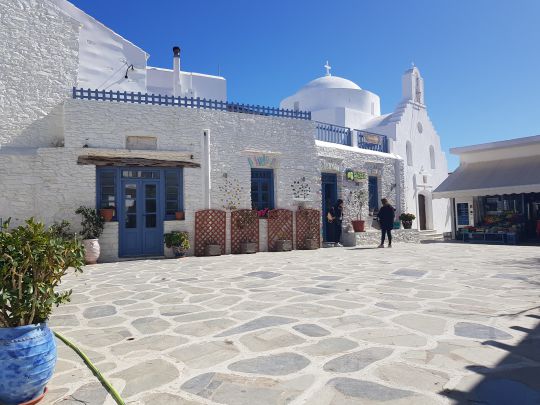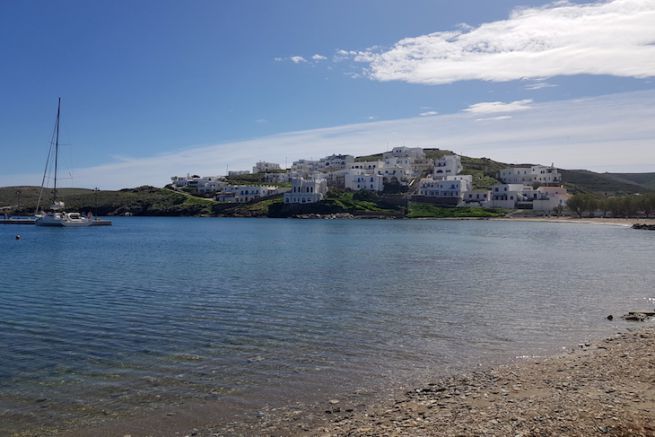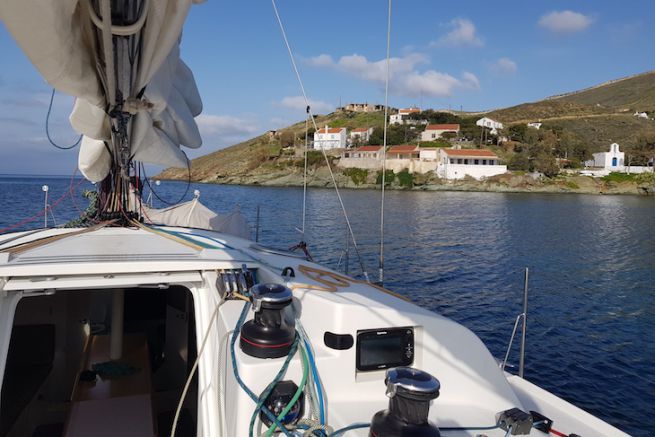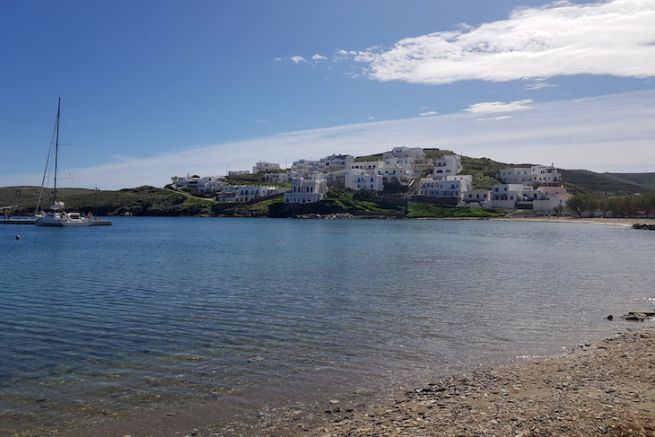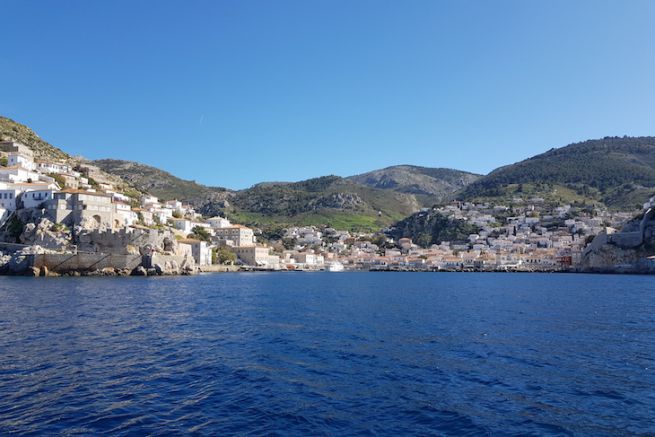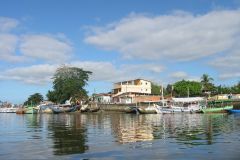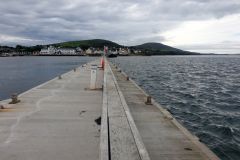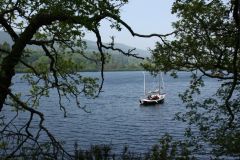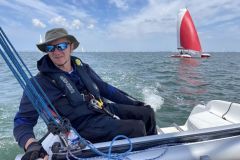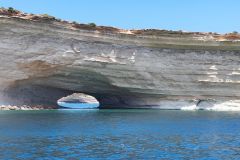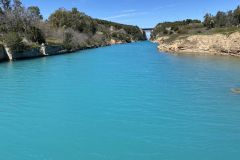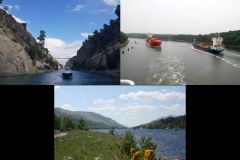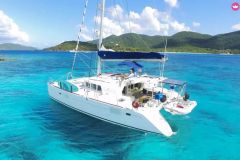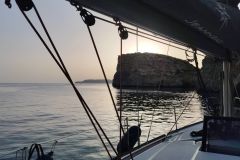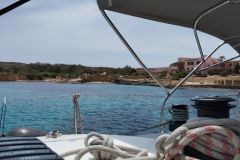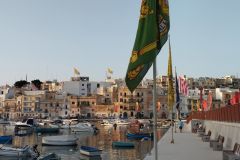Feet in the water
Kythnos is a Greek island in the Western Cyclades, located between Kea and Serifos and 52 miles from the port of Piraeus (Athens). This small mountainous island of less than 100 km2 (99 km2 to be exact) remains rural despite its stream of tourists who land every summer season. Its many beaches (nearly 60!) are not to blame... Nevertheless, Kythnos an authentic image, with its flowered mountains, olive trees, fishing ports, but also and especially its many churches and monasteries (and altars along the roads)... There are about 365 of them on the island! The capital of Kythnos is Chora and is a charming village with winding streets, white facades and colourful shutters and doors, paved and drawn streets.
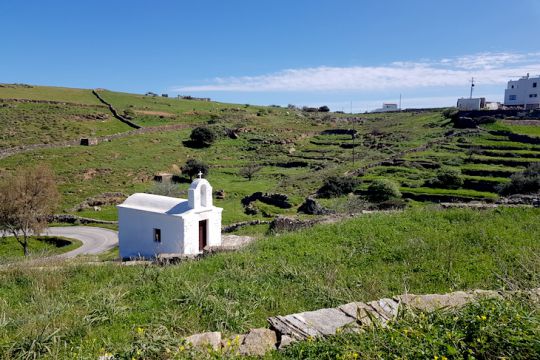
But what made Kythnos famous is its thermal and iron springs, with medicinal properties that criss-cross the city of Loutra. It seems that the water flowing through it (between 40 and 50°) cures various diseases such as skin problems or nervous diseases... Even if the spa has been abandoned, we can still enjoy the benefits of an "outdoor" spa by the sea.
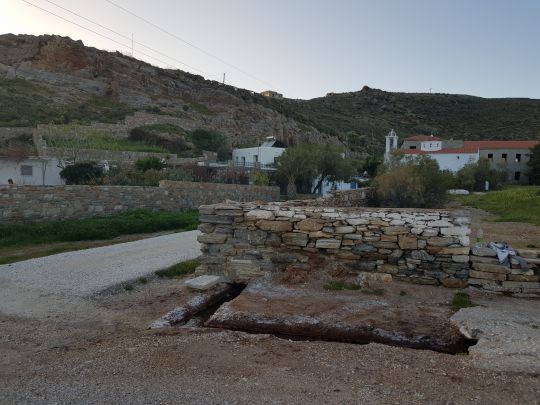
Loutra, beneficial hot springs
It's been since Kea that we reached Kythnos, 20 miles from our first stopover, and after a little less than 3 hours of sailing. This time, we decided to moor in the fishing port of Loutra, where the depth is 4 m (deepest). The arrival by night requires a little control since the port of Loutra is rather isolated. Also watch the depth, as it reduces very quickly. We go from a depth of 27 m at the entrance to the bay to less than 4 m at the port.
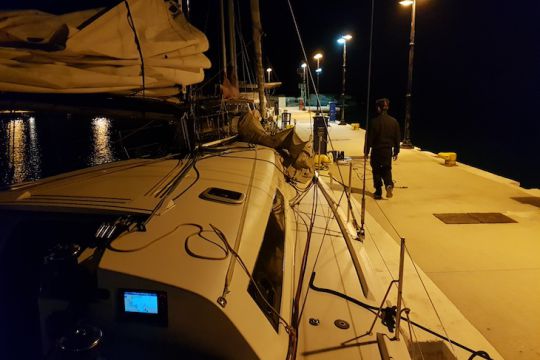
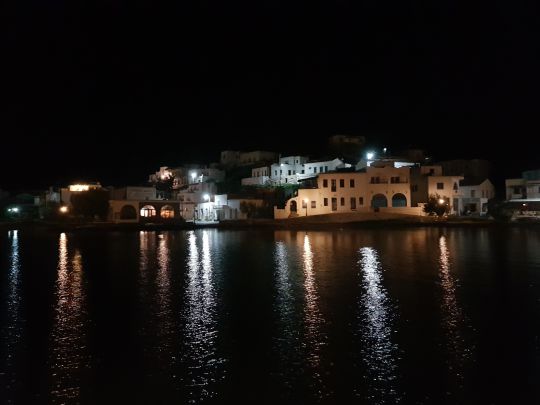
Although in the off-season everything is closed when we arrived (around 9 p.m.), the port officer (who had probably seen us arrive from the heights) came to welcome us and offer us water and electricity. For dinner, so plan what you need on board, in the evening, there is no soul who lives... Our night at the quay will have cost us 12 euros (we have a little impression that the price is at the head of the customer). For a shower (a unique room accessible directly in the harbour master's office... His own shower?), you need to count 2 euros. Note the kindness of the officer who took us to refuel at the gas station a few kilometres away, the port being devoid of fuel.

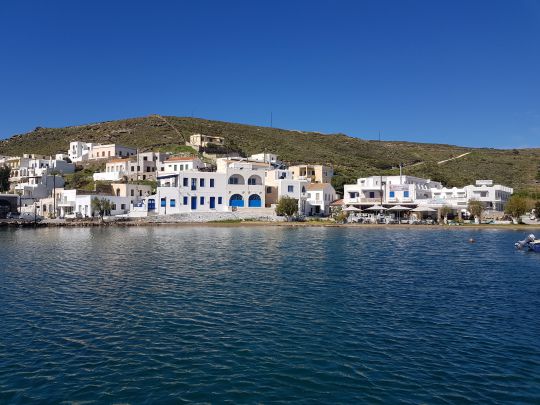
The next day, enjoy a "waterfront" breakfast in Loutra's only open restaurant/bar in March, in the city centre. We are the first customers of the year. The prices are reasonable and the owners are really nice! We then decide to go and discover the hot springs of Loutra, the city's attraction.
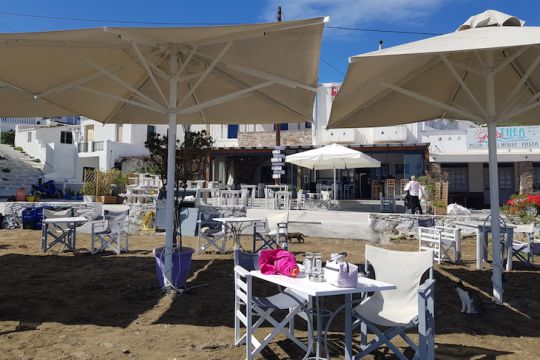
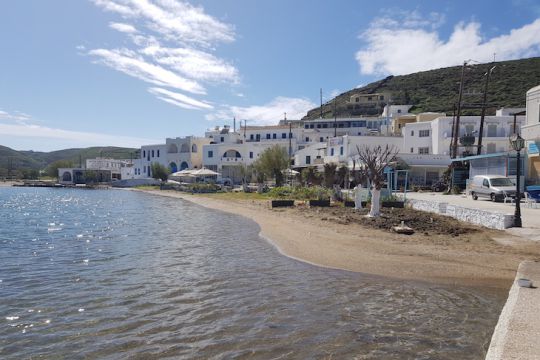
Just walk along the beach and enjoy an outdoor spa in a small pool by the water (next to the Tower of Loutra), surrounded by rocks, where the burning water mixes with the colder sea water... We had to wait a while to be able to enjoy a moment of calm and a hot water bath, but it remains ideal to end our day in beauty and relieve our body from a long walk in the sun, through the mountains. In the summer, there must be a crowd!
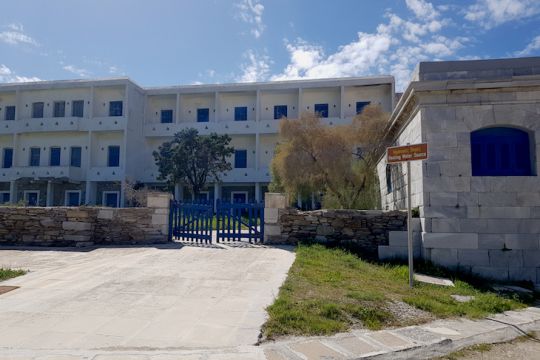
The former spa of Loutra

Loutra's outdoor spa
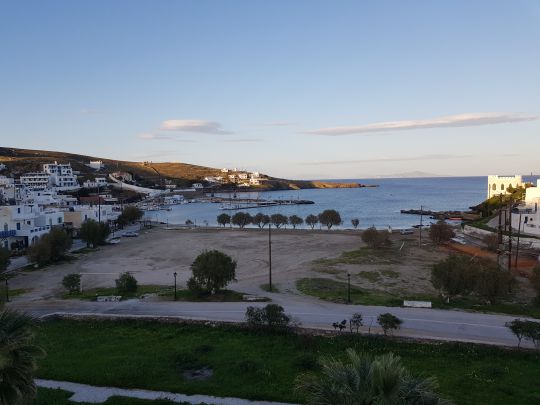
The city of Loutra
Chora, the "medieval" capital of the island
To refuel, you have to drive a little... Chora (pronounced Rora) - the "capital" of Kythnos is located on the heights of the island, about 4 km from Loutra. Chora is also the name used on the islands to describe the capital, we were told.
Once again, there are several options available to us since we are pedestrians: a taxi (about 5 euros to reach the city), a stop sign (which works quite well on the island since we have completed our round trip in this way), or even walking.
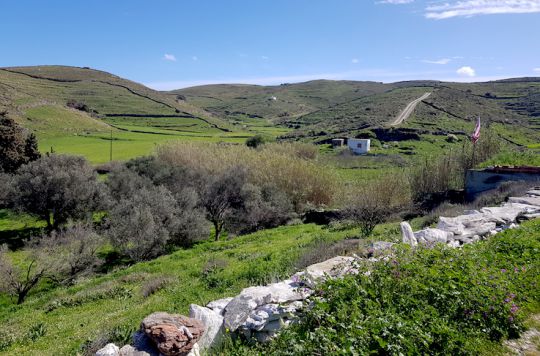
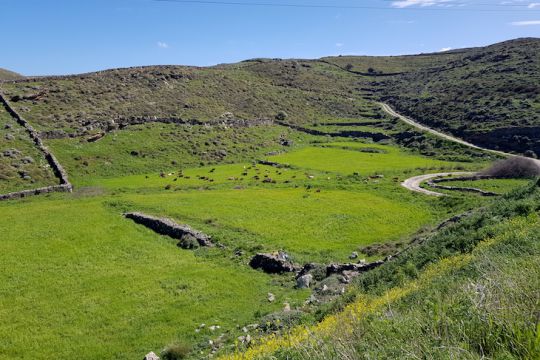
We leave on foot to reach the heights of the island. The opportunity to discover many sheep and goat farms that graze in the green hills, fields of wild flowers, fig trees that line the roads or churches that grow everywhere on the hills... But above all, we enjoy an incredible view of Loutra, below. The road climbs and winds through the mountain, but the silence and very green landscapes are a fabulous spectacle. The closer we get to the city, the more the "chaos" that qualifies Greece is present around us: factories, building materials, rubble, unfinished buildings, sheet metal, etc. mark the surrounding fields...

The port of Loutra below

When we arrive in Chora, we immediately find mini-markets and bakeries. Prices are very affordable and the choices of fruits and vegetables are important: strawberries, mangoes, bananas, kiwi, orange... A drugstore also allows you to buy consumables and everything you might need on board: batteries, lamps, crockery, crafts, tools..
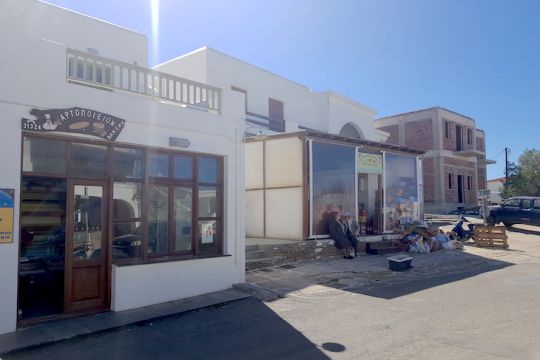
Chora's bakery and mini-market
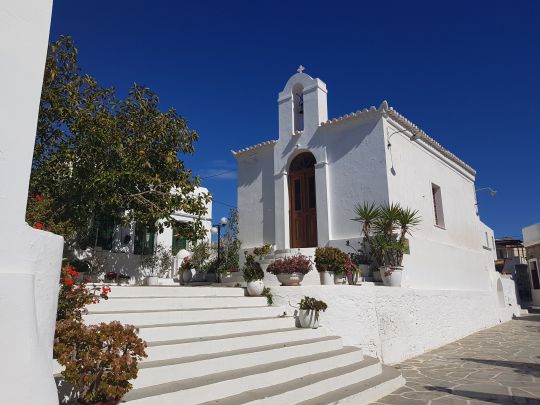
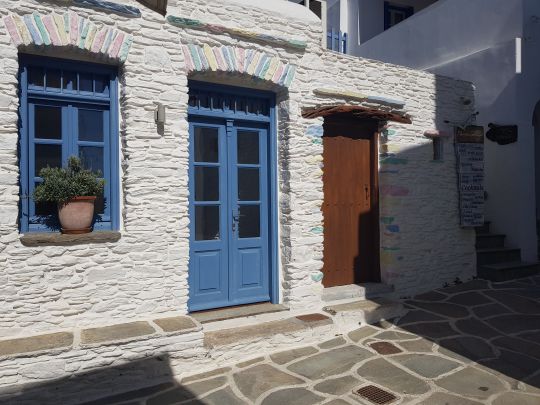
Above all, don't turn back right away, you might miss this beautiful city typical of Greece. Continue on your way and drive through the narrow streets of Chora city where cars do not circulate. Whitewashed houses with their famous flat roofs and blue shutters line the roads, churches still white still proudly dominate the city, around a small square... The cobbled streets are decorated with drawings in white paint, representing flowers, hearts and other ornaments... Few shops are open in this month of March, but take advantage of them to visit the few open shops (which says shops says tourist and indeed, in season, the city is packed!), but above all, spend a head in the shop next to the cocktail bar (the name is impossible to translate into French...) where an incredible orange scent emerges right down to the street..
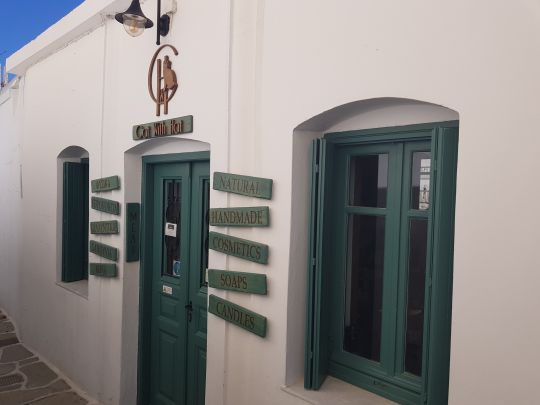
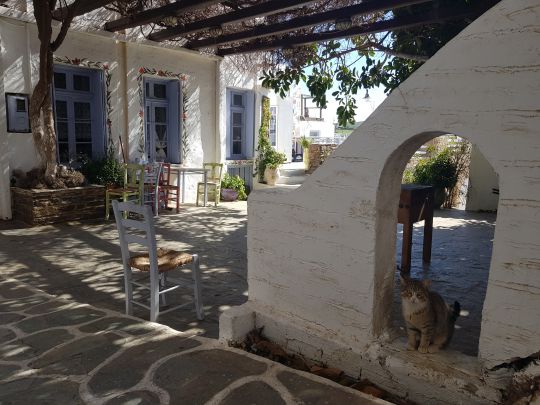
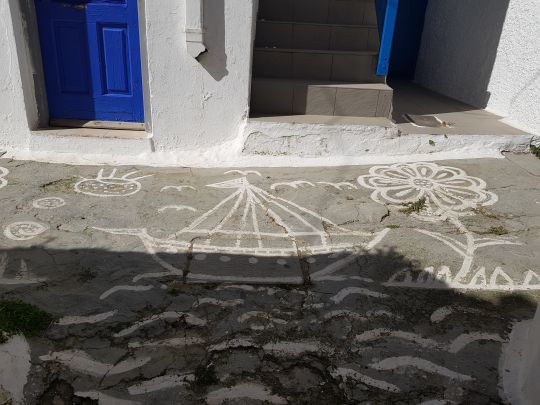
Chora is really worth a visit! There is a feeling of tranquility and well-being, an inhabited city, but yet so deserted at this time of year. The contrast between aging or even ruined dwellings and modern buildings is paradoxical...
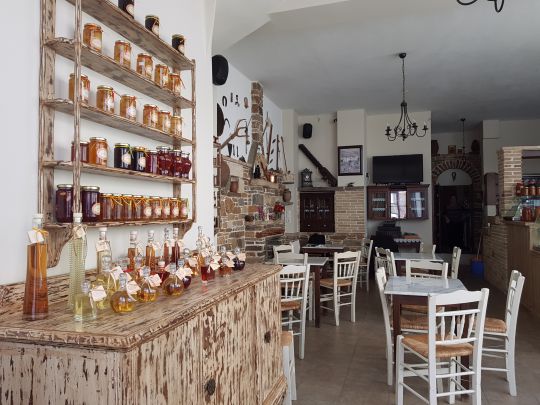
It smells like orange!
